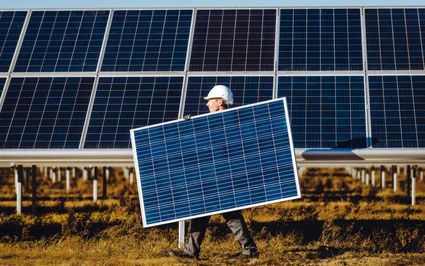Solar Asset Acquisition: Optimizing the Value of Third-Party Engineering Services During and After Construction
For Independent Power Producers (IPPs) that acquire solar assets after the project has been developed and designed—rather than during the development or design phases—there are fewer opportunities to address design issues or implement value engineering. However, it is still crucial to involve an Owner’s Engineer (OE) or an Independent Engineer (IE) as early as possible in the process to ensure safety, quality, and long-term operational performance.
In the first part of this two-part article, I outlined how IPPs can maximize the value of third-party engineering services throughout project development and pre-construction. In this second part, I will focus on the specific engineering services that Pure Power provides to IPPs during and after construction, emphasizing how these services add value at every stage.

**IE or OE Engaged During Construction**
The key milestone that separates pre-construction from actual construction is when the Engineer of Record releases the "Issued for Construction" (IFC) drawing set. Once construction begins, the primary role of an IE or OE is to ensure that what is being built aligns with the original design and specifications.
The earlier Pure Power is brought on board as an OE or IE, the more value we can deliver. It's in everyone's best interest for quality assurance and control checks to start right from the beginning of construction. Addressing a problem in the early stages—like a “golden row†of panels—is far easier and less costly than fixing it after months of production.

**Quality Assurance and Quality Control**
Verifying as-built conditions against the IFC drawings and project specifications is a core part of QA/QC. This includes visual inspections, insulation resistance testing, VLF testing, polarity checks, and ground continuity tests. These checks are essential before system energization and commissioning.
During commissioning, all power equipment—such as inverters, protection devices, transformers, and reclosers—are tested against the latest plans, energized, and operated. These tests follow industry standards like NETA and IEC, including IEC 62446-1, which outlines requirements for testing, documentation, and maintenance of photovoltaic systems.
**Milestone Verification**
Major milestones such as mechanical and substantial completion often trigger progress payments. Lenders frequently engage Pure Power during construction to provide an independent verification report on milestone completion. As an OE, we also conduct site visits to support owners in ensuring compliance with design and contract documents. Once funds are released, the owner or lender loses leverage to correct any deficiencies.
**Performance Validation**
As discussed in a previous post, capacity and performance ratio tests are conducted based on established standards. When done correctly, these tests confirm that a solar asset is performing as expected. These validations are critical for de-risking solar asset acquisitions, whether the project is newly built or already in operation.
**IE or OE Engaged Post-Construction**
For IPPs focused on acquiring operational assets, technical due diligence is essential to understand the actual as-built conditions. This applies to both new and older systems. After construction ends and commercial operations begin, it's just as important to validate the PVsyst model as it is to evaluate the fielded design and construction. Ideally, the system should be free of defects and safety hazards.

**As-Built Drawing Review**
As previously mentioned, if record drawings don't match the actual conditions, project owners face unnecessary costs. This review is a critical step in asset acquisition. The goal is to confirm that the fielded system matches the documented one.
**Performance Analysis**
Since all revenue from a solar asset depends on the PVsyst model, verifying its accuracy is vital. Adjustments may be needed to align the model with real-world performance. For older systems, factors like soiling, degradation, and environmental changes must be considered. Pure Power can improve model accuracy by incorporating updated landscape data and advanced modeling tools.
**Safety Evaluation**
After construction, a key goal of technical due diligence—such as plan reviews, QA/QC checks, and field inspections—is to ensure the system is free from safety risks. Once acquired, making changes becomes expensive. For long-operating systems, it’s crucial to verify that maintenance has been properly scheduled and executed to prevent failures due to aging equipment.
Small Forklift Price,Small Electric Forklift,Mini All Terrain Forklift,Small Electric Forklift For Sale
Shandong Yineng Heavy Industry Co.,Ltd , https://www.yinengloader.com